I thought that I would say a few things about what I call “arterial streets,” and also the larger “grand boulevards.” Arterial Streets are designed for wheeled vehicles, with a segregated central roadway of two to four lanes, plus sidewalks on either side. The Grand Boulevard would have four lanes or more. (I overlap the two categories a bit, because once you start adding things like central turn lanes, median strips, shoulders/onstreet parking, bike lanes, Green Space buffers and so forth, a street can take on a Grand Boulevard character with four main lanes.) The Arterial Street is the smallest form of street in 19th Century Hypertrophism. In the Traditional City, however, most streets are a smaller and different format: the Really Narrow or pedestrian street. The pedestrian street is designed primarily for use by walking humans. It is typically one flat surface from one side to the other, with no segregated automobile roadway and no sidewalks. You could say the entire street is a “sidewalk.” Because you really don’t need much street width at all for people walking, these streets tend to be quite narrow, perhaps twelve to twenty feet from building-to-building assuming no front setback. If it becomes larger than this, it typically begins to feel quite barren and “oversized” unless you have a very large amount of people traffic, literally thousands of people.
You can certainly drive a car, truck, or even a bus on a Really Narrow pedestrian street, and often this is done, at least for deliveries and pickups and even for personal automobiles. However, it is primarily a place for people, such that people feel comfortable walking down the middle of the street even if they are sharing it with motorized vehicles, which are typically traveling very slowly, at 10mph or less.
Thus, the pedestrian street naturally tends to be Really Narrow, certainly compared to the Arterial Street which can easily be sixty feet wide when including both the central automobile roadway and sidewalks, plus any additional buffers and so forth.
I’ve given a basic ratio of 80% Really Narrow pedestrian streets, 17% Arterial streets and 3% Grand Boulevards as a way of thinking about how a Traditional City can be laid out. You can think of it as a 1:5 ratio, thus 1:5:25. This measure is by street length. Since the Really Narrow street is much narrower than the Arterials and Grand Boulevards, these larger formats take a proportionately larger amount of total surface area devoted to streets.
Although it may seem that this would create problems for motorized vehicles, in practice this is not the case. Although 80% of the streets are of the Really Narrow people-centric type, in actuality there are few places that are more than perhaps 200-300 meters from an Arterial Street. Thus, any trip in a wheeled vehicle would be on Arterial or larger streets until the last 200 meters or so, which might be done at a sub-10mph pace. Thus, from the perspective of a driver, it is largely irrelevant. Indeed, the Really Narrow street offers some attractions to a driver. There is typically very little auto traffic at all, so it is often easy to stop the vehicle right in the middle of the street for at least a few minutes, enough for a taxi dropoff or package delivery.
Let’s stop there and see what all of this looks like in real life:
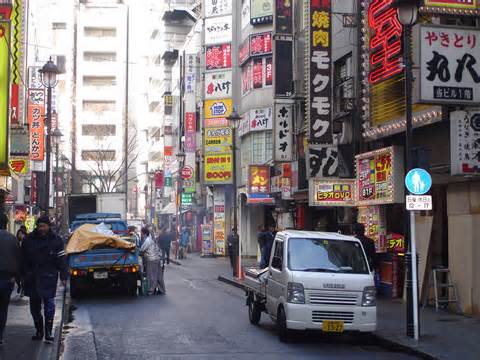
This is a basic Arterial street, in Tokyo. Clearly, this is at the narrower end of the range. However, note that there is a segregated central roadway with sidewalks on either side. Obviously, once you are designating the center of the street for wheeled vehicles, and the sidewalks for walkers, then it is no longer a people-centric street (Really Narrow “pedestrian” street). This is not necessarily related to street width alone, and indeed there are many Really Narrow pedestrian streets that are as wide or wider than this.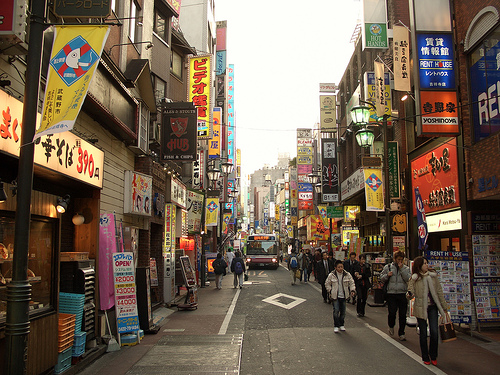
This street is not much narrower, but it is in the Really Narrow pedestrian street format, with one surface from side to side. There is no segregated place for wheeled vehicles and people, and as you can see people are comfortable walking down the middle of the street. Note that there is a bus making its way down this street! It is traveling very slowly, and is thus no particular danger or nuisance, despite being a very large vehicle.

Here we have a rather ugly mistake. This street should really be in the Really Narrow format, and undoubtedly was at some point. However, it was converted to what amounts to an Arterial format, with a segregated roadway, sidewalks, and onstreet parking. Yech!
Paris.

Another typical Really Narrow pedestrian street in Tokyo. No sidewalks, and people are comfortable walking down the middle of the street. Note the bikes and small motorcycles. This is not a “pedestrian only” area. But, everyone gets along easily together. There are actually a couple of trucks or delivery vans barely visible in the background. All those restaurants need supplies.
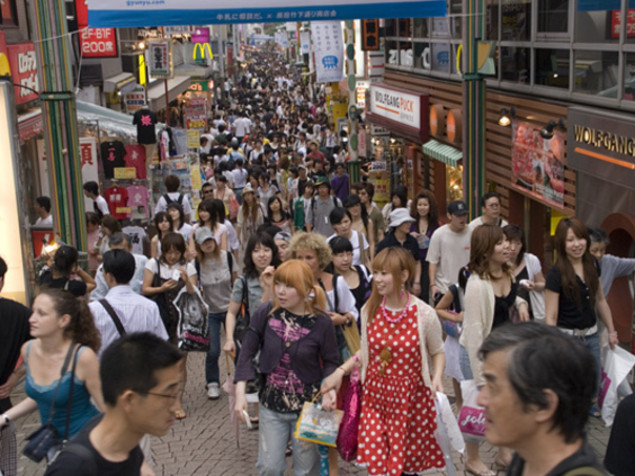
Another popular “shopping street” in Tokyo. No central automobile roadway here!
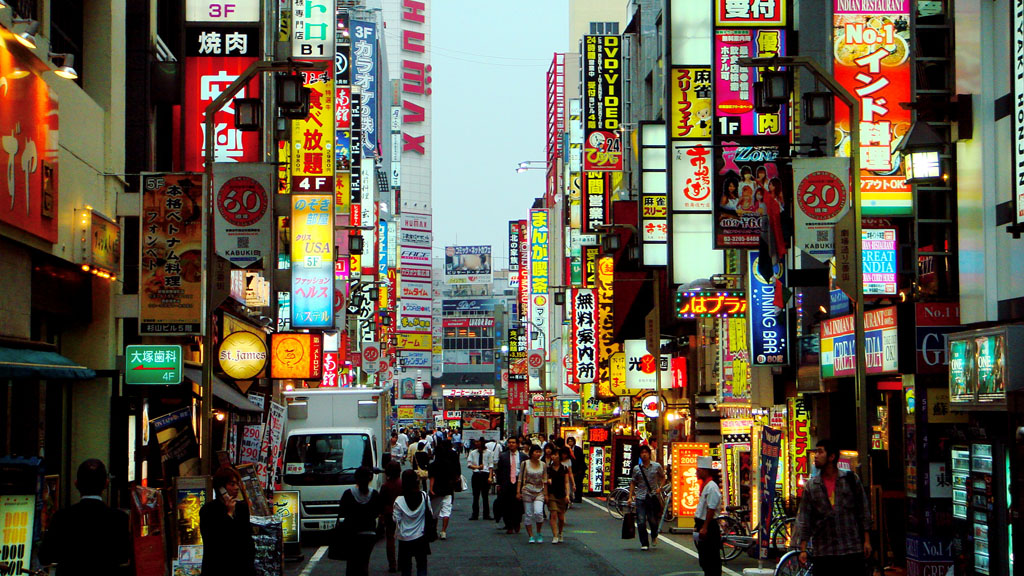
Another Really Narrow pedestrian street in Tokyo. Note the truck on the left making a delivery or pickup. It’s not really a problem.

Obviously this is on the narrow end of the Really Narrow Street range. Yes, this is a “street” not a “back alley.” These are the front entrances of houses and apartment buildings. The small lighted sign on the left is for a hairdresser. Tokyo again. Note the high-rise buildings in the background.
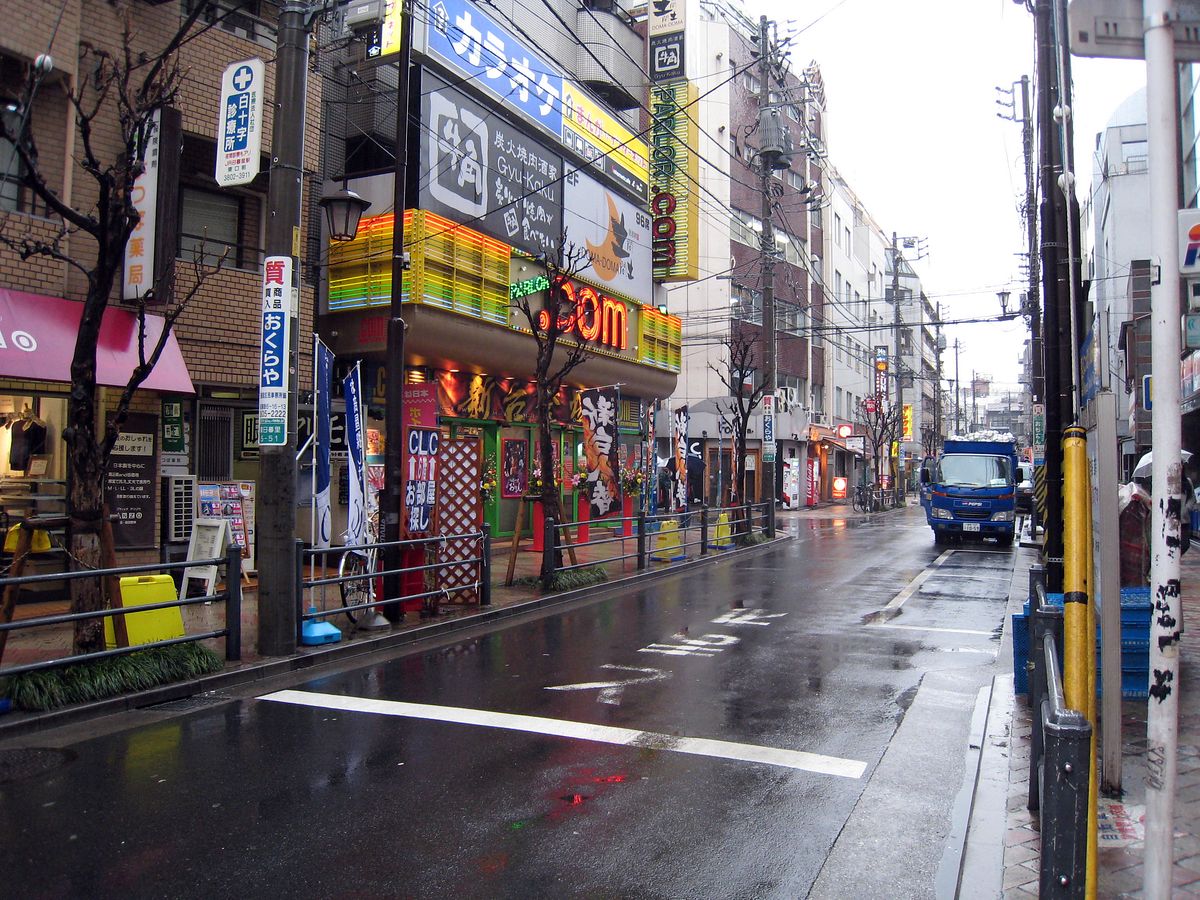
This is a slightly larger Arterial Street. It is still quite narrow — narrow enough that we do not yet have two segregated lanes of traffic. However, there is clearly a segregated central roadway and sidewalks. Note the steel fence barriers along the sidewalks. We will talk more about those soon.
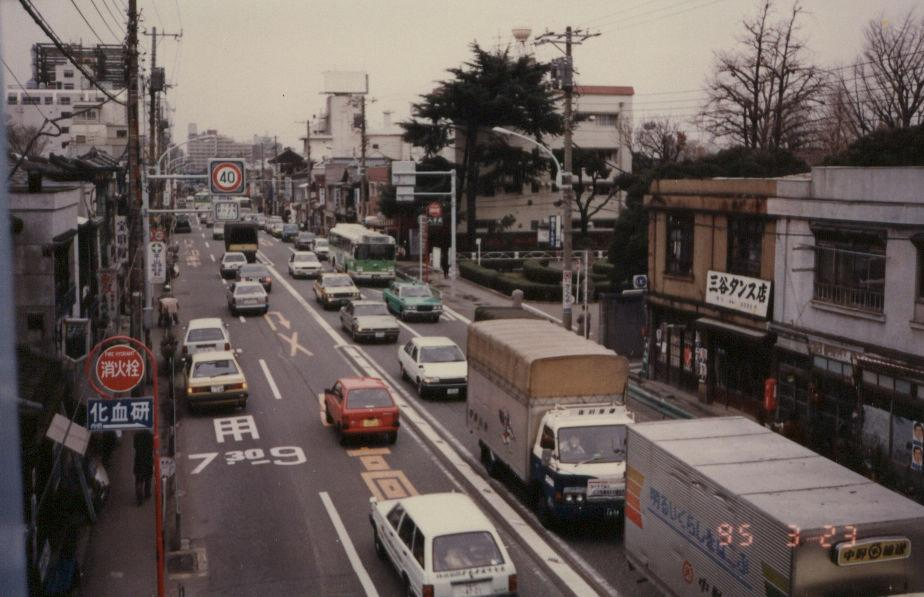
Now we are getting to a larger sort of Arterial Street. I generally designate “arterials” as two-to-four lanes of segregated automobile traffic. Here we have four lanes. It’s getting pretty big already, isn’t it? It is soooo much different than the Really Narrow pedestrian streets we looked at earlier. Note that there are no shoulders, no street parking, and again we have those steel fences along the sidewalks.
In practice, if you want to stop, the driver can typically pull into a Really Narrow Street, along the many intersections along the sides. This serves much the same purpose as shoulders.
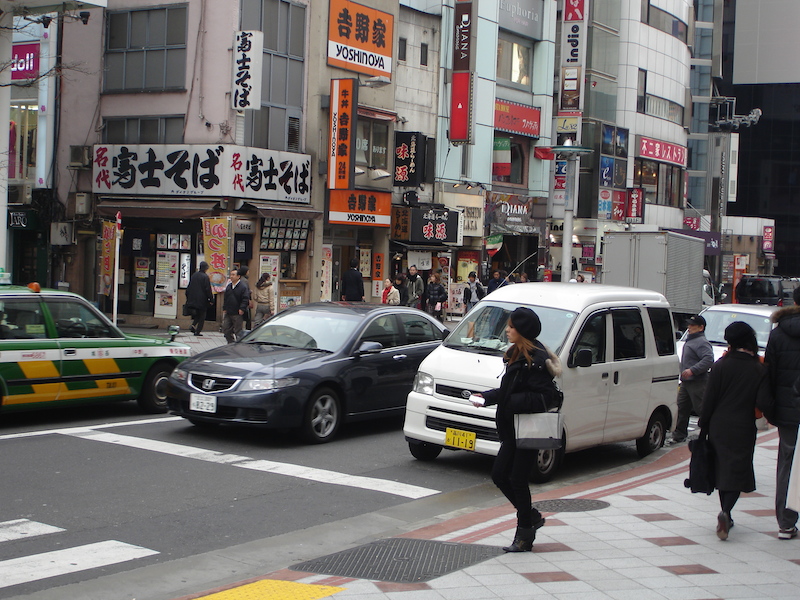
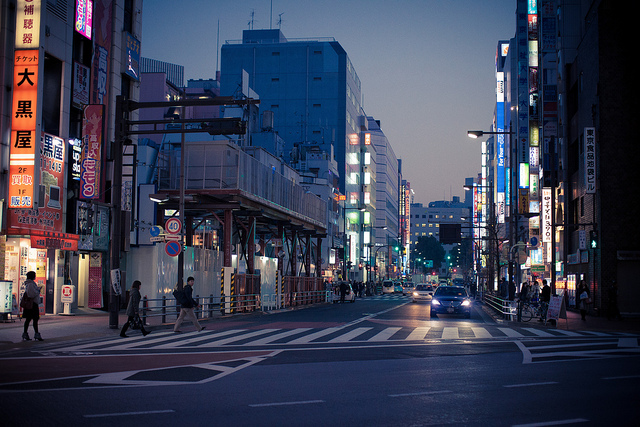
Arterial street widths are not very standardized in Tokyo. This is basically a two-laner, but it has some extra width. Note again the sidewalks with steel fences.

I just thought I’d throw another Really Narrow Street shot in there. Tokyo.
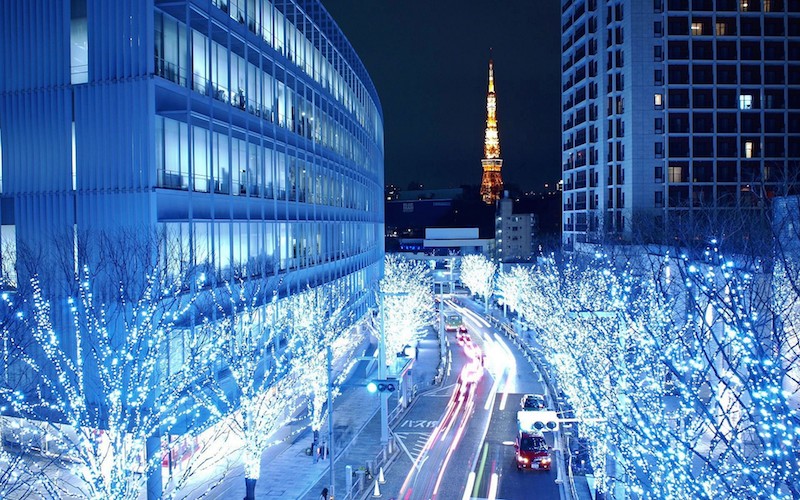
This is your basic two-laner Arterial, although with rather wide sidewalks and quite a few trees.
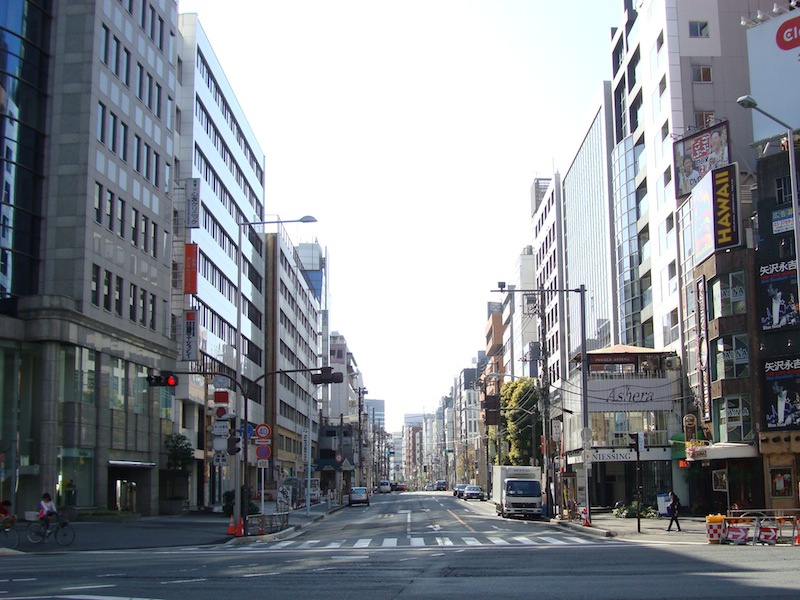
Arterial street.

An Arterial in the boutique district of Ginza.
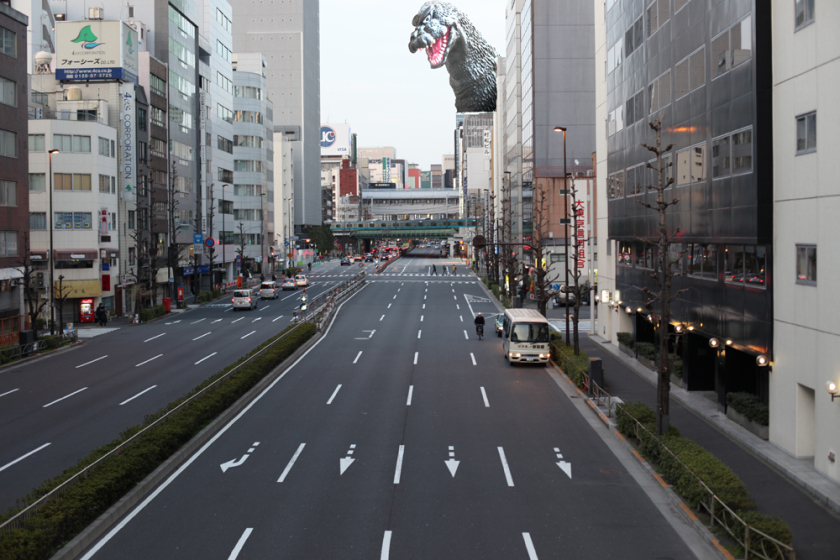
Now we are getting up to the Grand Boulevard size, with more than four lanes of traffic (here we have a total of eight). Note the steel fences and bushes along the sidewalks. No shoulders or onstreet parking here, but we have a median strip and a left-turn lane. Godzilla photobombs. You can certainly have very wide automobile streets like this, but not too many. This is for longer crosstown trips. I estimate roughly 3% of total street length should be Grand Boulevards.
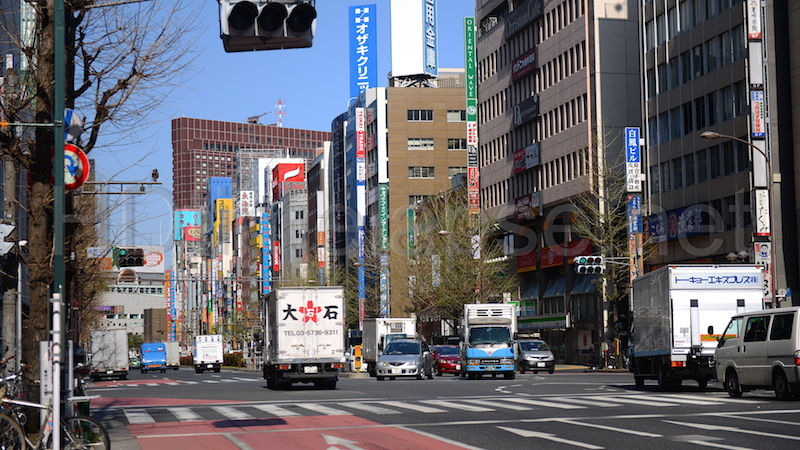
Another typical Grand Boulevard-size street. High-rise construction and these larger streets naturally go well together.
Now that we have looked at some arterial streets, let’s think about a few design issues.
Buffers: As I’ve said in the past, a lot of “green space” in Suburban Hell today serves as a “buffer” between automobile roadways and various places where people are, known as Places.
October 10, 2009: Place and Non-Place
This has been disastrous, as the city becomes consumed by automobile roadways, parking lots, and immense amounts of buffer space to make all the roadways and parking lots more tolerable.
However, we should also recognize that the buffer space is there for a purpose: to create some barrier or insulation between a lane of moving traffic, and the places where people are — homes, offices, stores, sidewalks, parks etc. This, in itself, is a worthy purpose. The trick is to have fewer automobile roadways and parking lots, so that you don’t need so much buffer space. That’s why I suggest that a Traditional City design be 80% Really Narrow pedestrian streets.
I noted several times the use of steel railings along Arterial Streets in Japan. Obviously, they too felt a need for some kind of buffer between the people space (sidewalk) and a lane of traffic. Because these Arterial Streets often do not have either a Green Space buffer (3-5 feet of trees or shrubbery), or a buffer in the form of on-street parking or a shoulder, they have opted for the most space-efficient design, a steel railing.
Thus, I suggest that Arterial Streets should have some kind of buffer between a lane of moving traffic and the sidewalk. This can take the form of a steel railing of some sort, but perhaps a Green Space buffer consisting of at least three feet of grass, trees, shrubbery and so forth would be better. Our roadways are already going to be forty or more feet wide, so an additional ten feet or so of buffer space (five feet on either side) is perhaps not too much of a concession. These Japanese Arterial Streets are often, like most streets in most cities, historical remnants of some pre-automobile period, so they had to make do with what they had, which was often not very much space to work with.
Conversely, the Really Narrow pedestrian street typically requires no buffers at all. If people feel a buffer is needed, it is often a reaction to an oversized pedestrian street. When a pedestrian street becomes too wide, it begins to feel quite empty and barren, which people often try to compensate for by adding shrubbery.

This outdoor shopping mall in Fort Wayne, Indiana, is a 100% pedestrian place with no vehicles or cyclists. However, in the typically stupid American fashion, the street width subtly imitates the 19th Century Hypertrophism of the small town Main Street, resulting in a very wide, barren area, which is also not identifiably a Traditional City element like a square or plaza. The designers are attempting to compensate for this area with the addition of Green Space, although the result is not identifiably a park, garden or other such element of the Traditional City, which I call a Place. They are just piling error on error.
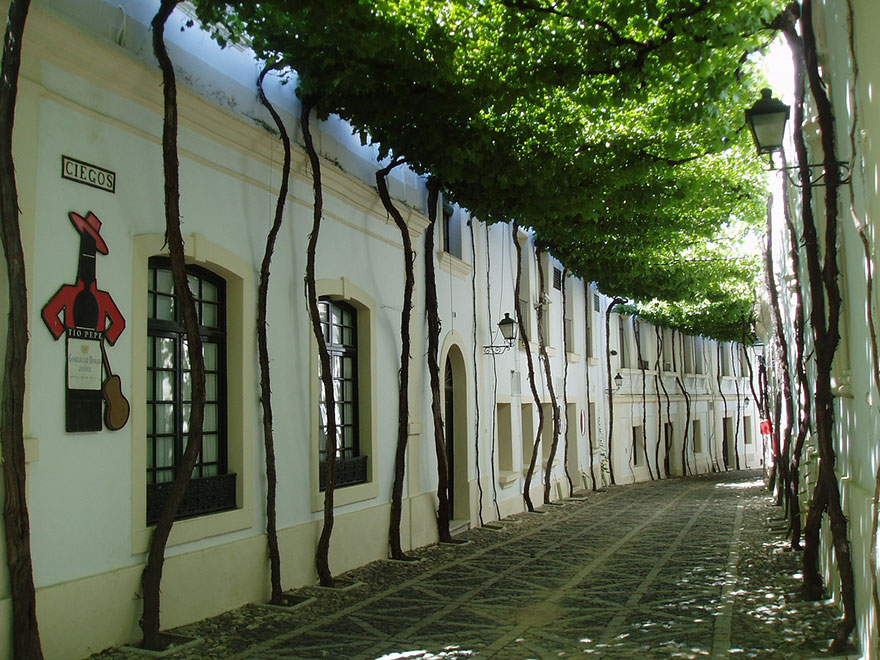
You can certainly incorporate plants into a Really Narrow Street environment, with wonderful effect. However, this is not to compensate for the error of an overly-large street, and is not used here as a “buffer.”
Brazil.
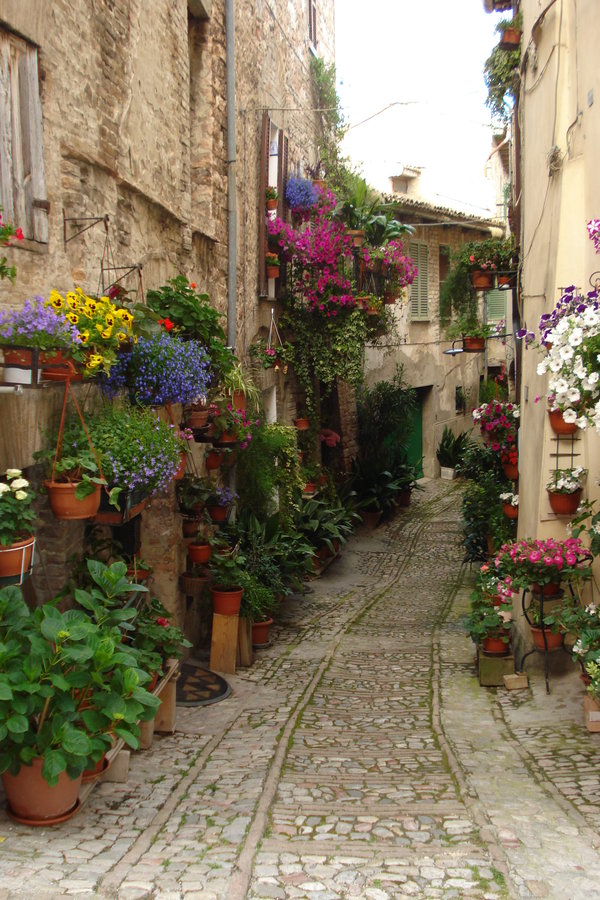
Gorgeous? Oh yes. But, this is not a buffer or Green Space, and is not to compensate for an overly-large barren paved area.
Italy.
Street Parking: I think street parking is hideous. If you don’t think so, just try to parallel park in heavy traffic. Women avoid it altogether. Street parking is common in the U.S., but this did not arise because of some design consideration for automobiles. Actually, it is a solution adopted later for streets that dated from the pre-automobile age. Unlike Japan, which generally had Really Narrow pedestrian-sized streets in urban places, in the U.S. during the 19th century, people adopted 19th Century Hypertrophism, which had vastly oversized streets in many situations. Once you have a vastly oversized street, then you might as well use some of it for shoulders or street parking. After a while, this became habitual, and the same format was repeated even in new development after 1950. The places that have tolerable street parking in the U.S. (not trying to parallel park in heavy traffic) are typically those where there is no need for it — probably a place without much traffic, and large amounts of existing off-street parking, like the typical U.S. suburban residential street. For one thing, street parking alone can’t accommodate very many parked vehicles. If you have that many vehicles, you probably have some other kind of off-street parking solution anyway.
July 26, 2009: Let’s Take a Trip to an American Village 3: How the Suburbs Came to Be
July 19, 2009: Let’s Take a Trip to an American Village 2: Downtown
July 12, 2009: Let’s Take a Trip to an American Village
One function of street parking is to provide a buffer between the sidewalk and automobile traffic. People have a sense for this, so if you don’t have some other buffer solution, people will tend to grasp at street parking or shoulders. These are both flawed solutions in my opinion, so it is better to have a proper buffer solution of Green Space (it’s always nice to have some trees), or perhaps a steel railing if space is an issue.
Street parking is rare on Japanese Arterial Streets, although it does exist sporadically.
Shoulders: As with street parking, shoulders provide a buffer space between the traffic and the sidewalk. Either a Green Space buffer or a railing would be better. Because 19th Century Hypertrophic cities do not have Really Narrow Streets, then of course people think that some of these Arterial Streets should have some means for a vehicle to stop. However, when you have intersections with Really Narrow Streets every hundred meters or so (the spacing between numbered streets in Manhattan is about 260 feet), then there are many places to pull over if necessary, and make short stops. Generally, a truck can park briefly (for a pickup or dropoff) right in the middle of a Really Narrow Street, with no particular difficulty. For longer periods of parking, small parking lots are often available. The kind of large, possibly high-rise buildings that are often found along Arterial Streets often have their own loading docks and garages.
Thus, as with street parking, I see no particular need for shoulders. These do serve a role within the 19th Century Hypertrophic environment as we know it in the U.S., but these roles can be served better in other ways, in my opinion.

Garbage truck stopped on a Really Narrow Street in Tokyo for a trash pickup. No shoulder, no sidewalks, no “onstreet parking,” no offstreet parking.
No problems whatsoever.
This street is wide enough for a vehicle to pass around another stopped vehicle, if necessary (if the stopped vehicle is off to the side of course).
However, Grand Boulevards, as they are expressly designed for high-volume vehicular traffic, may include something like shoulders. At this point, the street is so wide that adding a bit of shoulder space is perhaps no great problem. Plus, maintaining good vehicular traffic flow is a priority. Remember that Grand Boulevards constitute only about 3% of total street length in my example. If only 3% of streets have shoulders, it is not that big a deal.
I suggest shoulders with intermittent blocks or bumpouts so they can be used for stopping/standing, but not for travel. A Grand Boulevard may have pullouts for bus stops, taxi pickups, possible car breakdowns or other such situations, and perhaps pickups/deliveries, but not for parking.

Street with bumpouts for stopping/standing/deliveries.
Bike lanes: In the Traditional City, biking is far more pleasant along the Really Narrow Streets that constitute perhaps 80% of total street width. Why try to share a roadway with fast-moving motorized traffic when you can have a whole street all to yourself? The more crowded Really Narrow commercial streets would have too much walking traffic for easy biking, but typically there are a great many other Really Narrow Streets that are largely empty, and very pleasant for cycling.
Thus, Arterial Streets do not really require bike lanes either, this role being taken by the abundant Really Narrow Streets.
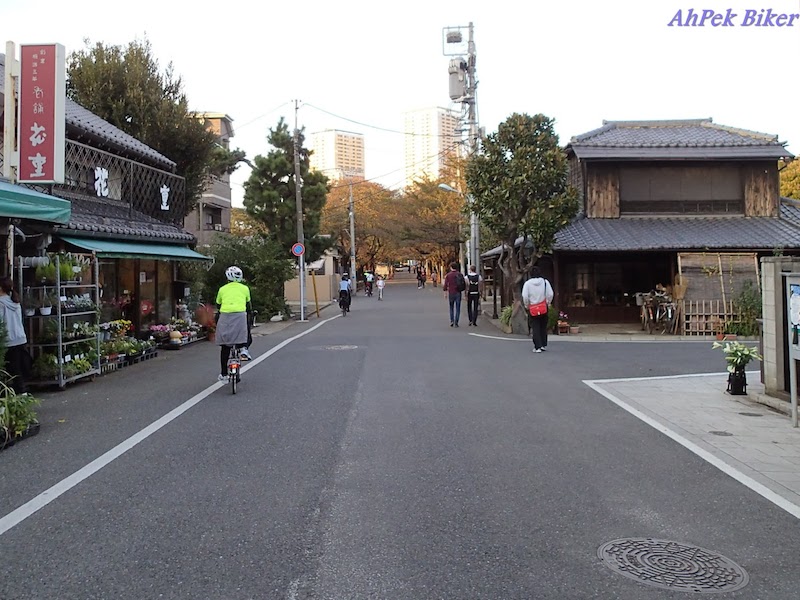
Wouldn’t you rather ride your bike here than on some traffic-filled Arterial Street? What if 80% of all streets looked like this?
Today, typically such alternatives do not exist for cyclists, so dedicated bike lanes on Arterials and Grand Boulevards would be a good solution.
Other purposes of Arterial Streets: I might mention that Arterial Streets serve some purposes besides enabling vehicular traffic. For example, they serve as firebreaks.
Click Here for the Traditional City/Heroic Materialism Archive

